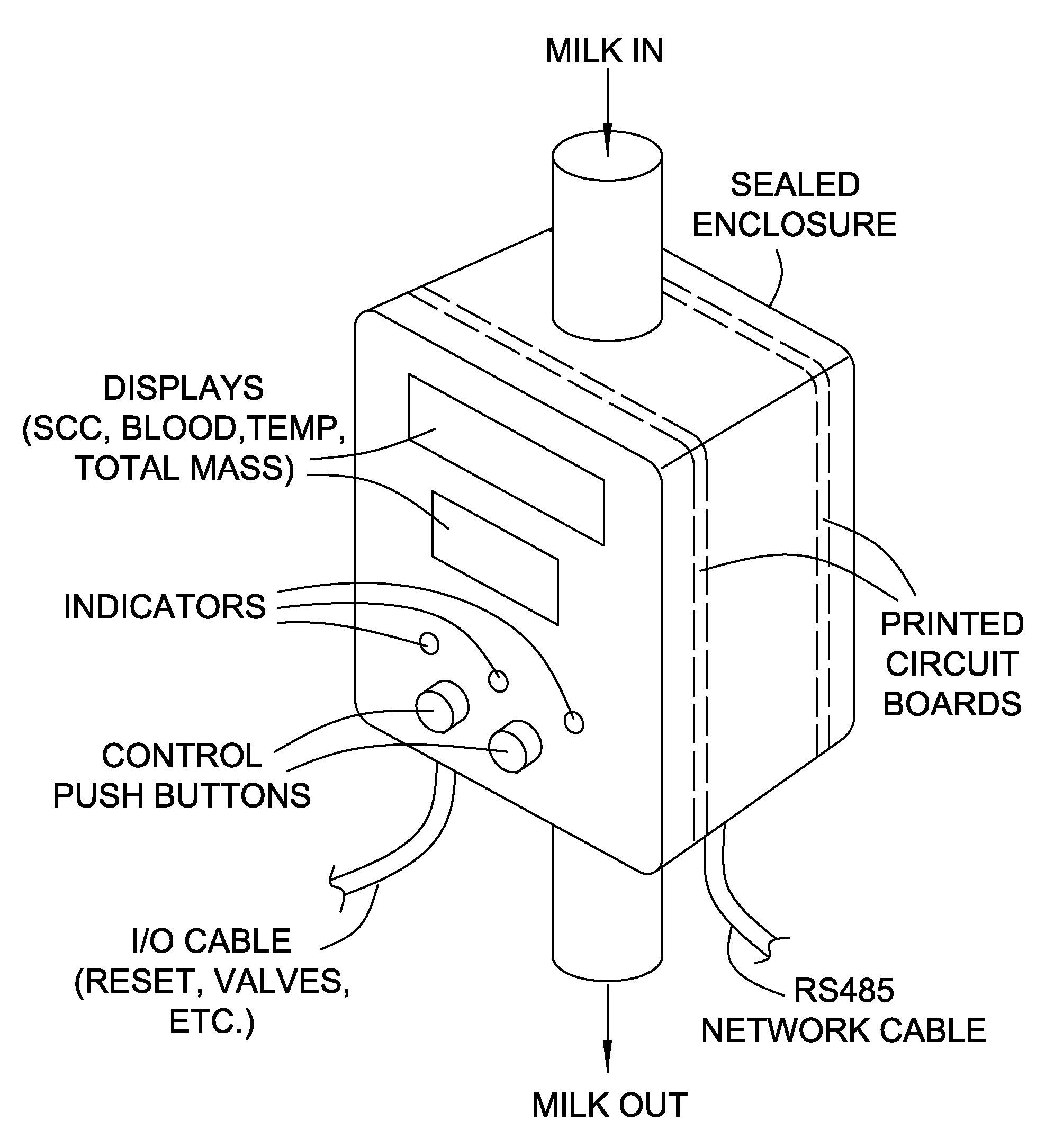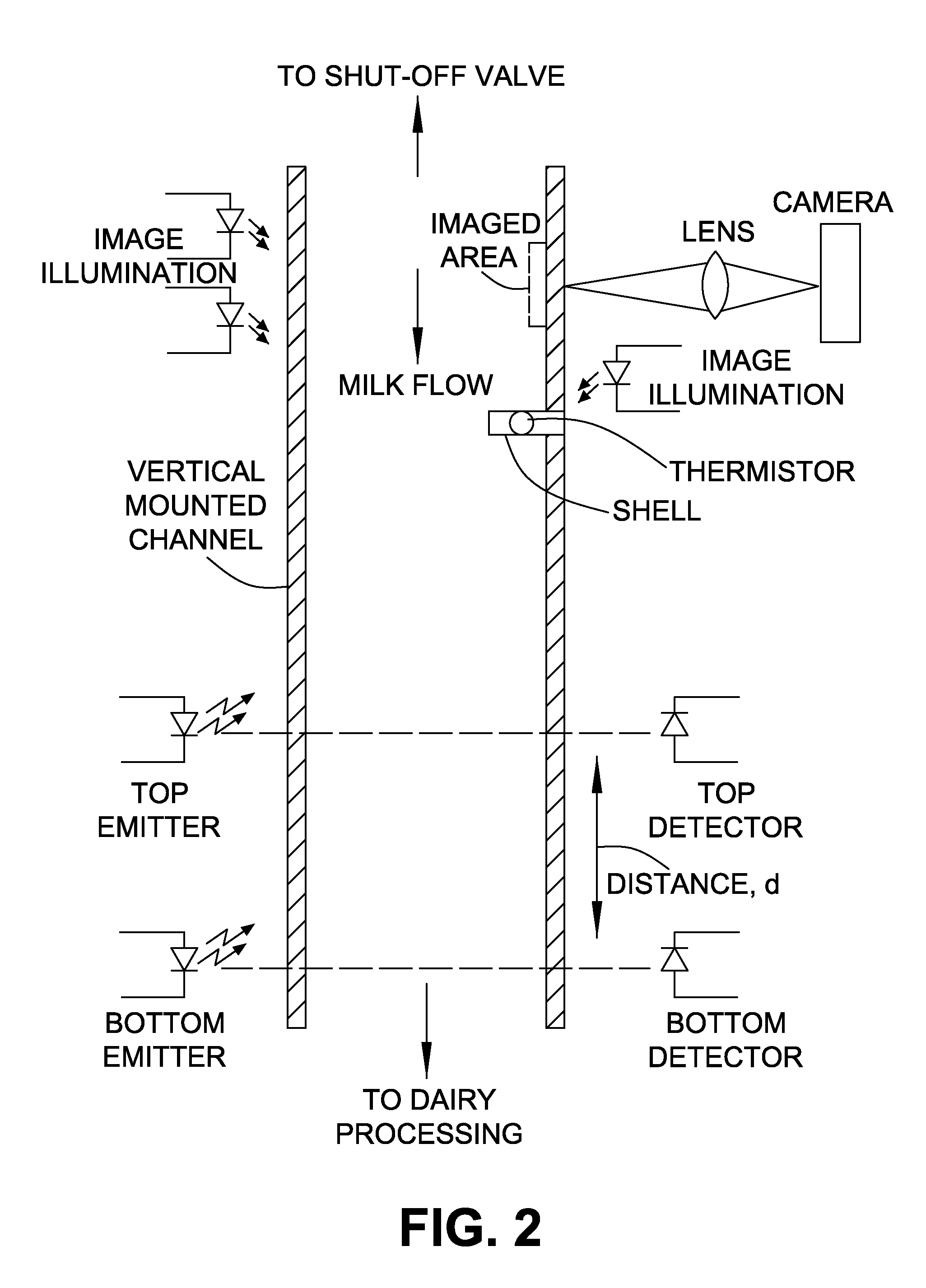In-line apparatus and real-time method to determine milk characteristics
a technology of in-line apparatus and real-time method, applied in the field of on-farm dairy milk analysis, can solve the problems of affecting the quality of milk, so as to achieve the effect of reducing the expense of the farmer in time and money
- Summary
- Abstract
- Description
- Claims
- Application Information
AI Technical Summary
Benefits of technology
Problems solved by technology
Method used
Image
Examples
second embodiment
[0069]these techniques also includes the use of one or more electronic cameras to capture images of the milk flow thickness against one or more tube or conduit surfaces of known profile, e.g., a flat plane. The position of features in the fluid flow in successive images may be measured by counting the number of pixels between the positions in the successive images and applying the known magnification factor. The elapsed time between images is known and hence the velocity may be estimated.
first embodiment
[0070]In a design such as the first embodiment above, the camera will deliver a video signal for processing in which the image sequence is continuous, that is there are no gaps between images corresponding to time periods when the fluid was flowing but no image was captured. In practice, the signal processing power and expense required to continuously analyze video images to measure the flow velocity is currently difficult to realize and also too expensive for an instrument that is to be installed at every milking station. There are several methods that may be applied to address this practical problem.
[0071]In one method, it is sufficient to apply the processing power of a single processor and associated hardware and software that is affordable to successive pairs of images, and use an averaging function to estimate the flow velocity for the time period between measurements when the processor is analyzing the preceding image pair. The sequence of events includes: the capture of a fi...
PUM
 Login to View More
Login to View More Abstract
Description
Claims
Application Information
 Login to View More
Login to View More - R&D
- Intellectual Property
- Life Sciences
- Materials
- Tech Scout
- Unparalleled Data Quality
- Higher Quality Content
- 60% Fewer Hallucinations
Browse by: Latest US Patents, China's latest patents, Technical Efficacy Thesaurus, Application Domain, Technology Topic, Popular Technical Reports.
© 2025 PatSnap. All rights reserved.Legal|Privacy policy|Modern Slavery Act Transparency Statement|Sitemap|About US| Contact US: help@patsnap.com



